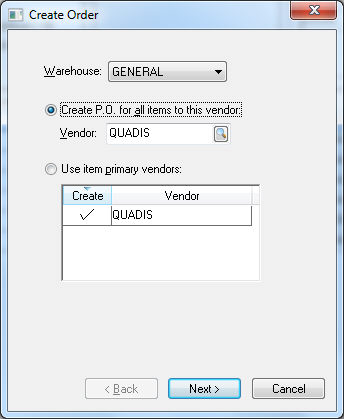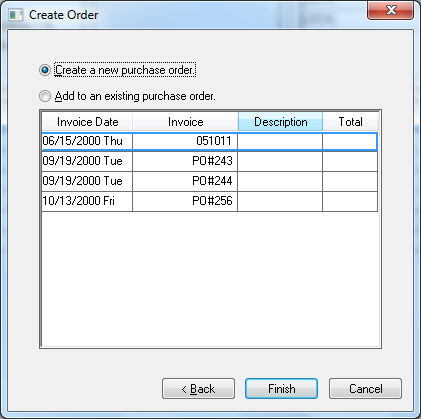- EBMS Knowledge Base
- Inventory
- Purchasing
-
Client Resources
-
EBMS Main Documentation
- Introduction
- Getting Started
- Getting Started | Initial Installation
- Getting Started | Company Setup
- Quick User Guide | Financial Staff | Accountant
- Quick User Guide | Financial Staff | Accountant | Accountants Journal
- Quick User Guide | Sales Staff
- Quick User Guide | General Staff
- Features
- Reports
- Security
- Server Manager
- Technical
- Technical | Data Import and Export Utility
- Technical | SQL Mirror
- Automotive
- Automotive | Parts Catalog
- Automotive | Pricing
- Automotive | Point of Sale
- Automotive | Product Application
- Automotive | Keystone Interface
- Metal Supply
- Fuel Sales
- Horticulture
- Horticulture | Farm Setup
- Horticulture | Processing Payroll
- Horticulture | Managing the Farm
-
Sales
- Introduction
- Customers
- Customers | Miscellaneous Customers
- Proposals
- Proposals | Processing Proposals
- Proposals | Sets and Templates
- MyProposals
- MyOrders
- Sales Orders
- Invoices
- Materials Lists
- Sales and Use Tax
- Sales and Use Tax | TaxJar
- CRM
- CRM | Auto Send
- Recurring Billing
- Credits
- Customer Payments
- Payment Card Processing
- Payment Card Processing | Gift Cards
- Payment Card Processing | Loyalty Cards
- Payment Card Processing | Verifone Gateway
- Freight and Shipping Tools
- General Ledger Transactions
- Point of Sale
- Point of Sale | Point of Sale Hardware
- Point of Sale | Xpress POS System
- Point of Sale | Advanced Tools
- Signature Capture
- Salesperson Commissions
-
Inventory
- Product Catalog
- Product Catalog | Using Product Codes for No Count Items
- Product Pricing
- Product Pricing | Special Pricing
- Tracking Counts
- Unit of Measure
- Purchasing
- Special Orders and Drop Shipped Items
- Receiving Product
- Barcodes
- MyInventory and Scanner
- Components (BOM) and Accessories
- Components (BOM) and Accessories | Component Formula Tool
- Made-to-Order Kitting
- Configure-to-Order Kitting
- Multiple Inventory Locations
- Multiple Inventory Locations | Creating Locations
- Multiple Inventory Locations | Using Multiple Locations
- Multiple Inventory Locations | Product Catalog Sync
- Multi-Vendor Catalog
- Serialized Items
- Serialized Items | Purchasing or Manufacturing an Item
- Serialized Items | Selling and/or Associating an item with a customer
- Lots
- Product Attributes
- Product Attributes | Selling and Purchasing Items with Attributes
- Product Attributes | Custom Attributes
- Mobile Scanner (Legacy)
-
Labor
- Getting Started
- Workers
- Taxes and Deductions
- Work Codes
- Time and Attendance
- Time and Attendance | Time Track App
- Processing Payroll
- Closing the Payroll Year
- Processing Payroll - Advanced
- Salaried Pay
- Piecework Pay
- Direct Deposit
- 3rd Party Payroll Service
- Subcontract Workers
- Flag Pay
- Prevailing Wages
- MyDispatch
- MyTasks
- MyTime
- MyTime | Communications
- MyTime | Setup
- Tasks
- Tasks | Getting Started
- Tasks | Creating Tasks
- Tasks | Scheduling Tasks
- Tasks | Customizing Task Views
- Tasks | Managing Tasks
-
Financials
- Introduction
- Fiscal Year
- Chart of Accounts
- Budget
- Financial Reporting
- Transactions and Journals
- Transactions and Journals | Journals
- Account Reconciliation
- 1099
- Departments and Profit Centers
- Fund Accounts
- Bank Accounts
- Bank Feed
- Vendors
- Vendors | Miscellaneous Vendors
- Purchase Orders
- Expense Invoices
- Vendor Payments
- AP Transactions
- Landed Cost
- Fixed Assets and Depreciation
- Fixed Assets and Depreciation | Fixed Assets
- Fixed Assets and Depreciation | Fixed Assets | Adding Assets
- Fixed Assets and Depreciation | Processing Depreciation
- Fixed Assets and Depreciation | Disposing Assets
- MyJobs
-
E-commerce
-
Rental
-
Job Costing
-
Manufacturing
Using the Purchasing Page to Create Purchase Orders
The Inventory Purchasing Page can be very useful to create a list of items to order from a specific vendor. The Overview section above describes a number of optional ways to display inventory items in a user-determined manner using queries and folders. Complete the following steps to create a new purchase order.
Select the Vendor option in the Inventory > Inventory Purchasing Page and enter the Vendor ID of the vendor to whom you wish to place the order. Only the items that have the vendor listed on its vendor list will be displayed.

To automatically enter the recommended order amount based on the Minimum Inventory and Maximum Inventory fields, click on the Default Orders button. The Order Quantity will be updated with the Order Amount only if the Net Ordered (Count + Purchase Orders - Sales Orders) amount is less than the Minimum Inventory Amount. If Multiple Order Amounts are less than or equal to Maximum Inventory amount, the Order Quantity will set to multiples of the Inventory Amounts value. Click on the Clear button to zero all Order Quantity fields including the numbers created with the Default Orders button.
The Order Quantity can be manually adjusted to the desired order quantity. Order Quantities can be zeroed if the user does not wish to order any additional inventory or the Order Quantity can be manually entered. Note that if list queries are changed to hide or display different sets of inventory items, the Order Quantity amount will not be lost even when the amount is not shown on the displayed list.Click on the Show items with order quantities button to list only the items that will be listed on the new purchase order.
Click on the Create button and select Order. A Purchasing Vendor dialog will appear to verify the vendor.

Select the Create P.O. for all items to this vender option to create a single P.O. for all items or select the Use item primary vendors option to create multiple purchase orders based on the primary vender setting of the item. Review the Purchasing Tab section for more details on the primary vendor.
Click the Next button. A purchase order list will appear if POs already exist for the selected vendor as shown below:

The Create Purchase Order wizard can check special order items for this vendor. Enable the Inventory > Options > General > View when creating purchase order option to check all special orders within this wizard as shown below. Review the Special Order and Drop Shipped Items section for more details on special order items.

Click Next to create a purchase order. The following dialog will appear:

Click Yes to view the newly created purchase order and the purchase order window will open. At this time you can print or fax the purchase order to the vendor or contact the vendor by telephone and verify the pricing.
Go to Expenses > Invoices and P.O.s to view, delete, print, or process purchase orders. Review [Financials] Purchase Orders > Overview for more details on the purchase order window.
Review Manufacturing > Creating a Batch > Creating a Batch from the Purchasing Page for steps to create a manufacturing batch to restock inventory.
